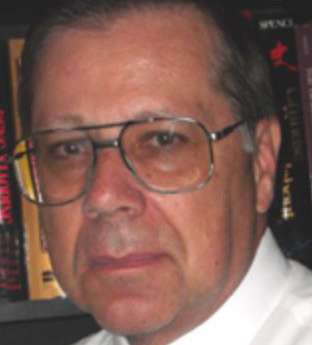
By JOHN RICHARD SCHROCK
Texas Federal District Judge Matthew Kacsmaryk’s ruling attempting to invalidate the F.D.A.'s approval of the abortion pill mifepristone is remarkable in referencing many times what has become known as the Comstock Act of 1873. Despite our accusing other countries of censorship, we overlook the extensive censorship that occurred over a century ago in America centered around birth control and a wide range of other related topics.
Anthony Comstock (1844–1915) today would be shunned as an extreme prude, terribly uncomfortable with any public mention of sexuality or nudity. His was a time when women’s swim outfits had to cover the whole body. Women were considered subservient to their husbands, a philosophy called “complimentariansm.” And doctors (nearly all men) would never advise wives to say “no” to their husband during their fertile cycle, despite lack of food to feed their current children.
Most Americans are appalled at the subjugation of girls and women under the Taliban based on religious beliefs. Restrictions on outside travel without a male family member, denial of education, and forced wearing of a designated head scarf are some of the acts of civil oppression justified by religion in some portions of the Middle East. But we suppressed women as well, especially over reproductive rights.
“Comstockery in America: Patterns of Censorship and Control” by Robert W. Haney was published by Beacon Press in 1960 and provides a history of American cultural censorship that restricts literary, dramatic and artistic work as well as censorship of political views, female rights included.
As a young man, Anthony Comstock fought in the Union army where he was appalled at the sinful words spoken by his fellow soldiers. When he attended a Roman Catholic mass, he considered the services “mere frivolity” and he “soon became disgusted.” Comstock’s ideology would be considered an evangelical Christian nationalist position today.
On March 3, 1873, Comstock gained Congressional approval of a censorship law that would eventually be called the Comstock Act. At the time, there were very few contraceptives and this statute defined contraceptives as obscene. It became a federal crime to disseminate birth control or related information through the mail or across state lines, thus the connection to the Texas judge’s ruling today. Comstock was then appointed as a United States Postal Inspector to suppress obscenity. Haney describes how Comstock, opening citizens’ mail, could soon boast that “...he had destroyed more that fifty tons of indecent books, almost four million obscene pictures, and 16,900 negatives for such pictures. He also credited himself with the dubious distinction of having driven fifteen people to suicide.”
Comstockery book banning continued on beyond his lifetime, including works by Sinclair Lewis, Ernest Hemingway, Aldous Huxley, Theodore Dreiser, Bertrand Russell, George Bernard Shaw, etc. Although nearly all modern histories now condemn Comstock, his work is greatly praised in “Outlawed!: How Anthony Comstock Fought and Won the Purity of a Nation” by Charles G. Trumball in April 19, 2013. That publisher asserts: “Christians will only gain ground in the contemporary ‘Culture Wars’ as they recover the comprehensive approach to sexual ethics held by Comstock and his allies.”
But Comstock’s obsessions included other anti-feminist views, including opposition to women voting. “The Man Who Hated Women: Sex, Censorship, and Civil Liberties in the Gilded Age” by Amy Sohn was released July 6, 2021. Sohn profiles eight women (writers, doctors, publishers) who were charged with violating federal and state Comstock laws, including woman presidential candidate Victoria C. Woodhull, Ida C. Craddock, and Emma Goldman.
But most prominent was Margaret Sanger (1879–1966) who first served as a nurse. Poor women came to her for a pregnancy check, desperate that another mouth not be added to their already starving family. As founder of the birth control movement, Sanger published 100,000 copies of “Family Liberation” describing the few methods of birth control known at the time. Mailing them from varied post offices to get around Comstock’s censorship, she accumulated nine federal violations and fled the country. Comstock sent police, disguised as a poor couple, to ask her husband for a copy of the book, and arrested him when he provided it. He took the 30 days in jail rather than pay the $150 fine. Several weeks later, Comstock died.
Margaret Sanger returned from exile. The country’s attitude had changed in her favor, and she received a small penalty. Sanger would lecture worldwide and arrange for the funding of the research leading to the birth control pill. One irony in this century of cultural change is found in Margaret Sanger’s perspective on abortion. Sanger had seen the terrible outcomes and widespread death of desperate women who attempted their own coat-hanger (or back-alley) abortions a century ago. In “Family Limitation,” Sanger wrote: “no one can doubt that there are times when an abortion is justifiable but they will become unnecessary when care is taken to prevent conception. This is the only cure for abortions.”
Sanger hoped that with sex education and birth control available, there would be no “unwanted children.” Unfortunately, adequate sex education is rare in the U.S. And most school teachers are aware that there are still unwanted children today. Depending upon upcoming court actions, there may soon be even more.
. . .
Texas Judge Matthew Kacsmaryk’s ruling can be read here:
https://www.documentcloud.org/documents/23746119-read-texas-federal-judge-ruling-on-abortion-pill/
WGBH: Anthony Comstock's “Chastity” Laws are at:
https://www.pbs.org/wgbh/americanexperience/features/pill-anthony-comstocks-chastity-laws/
. . .
John Richard Schrock has trained biology teachers for more than 30 years in Kansas. He also has lectured at 27 universities during 20 trips to China. He holds the distinction of “Faculty Emeritus” at Emporia State University.





